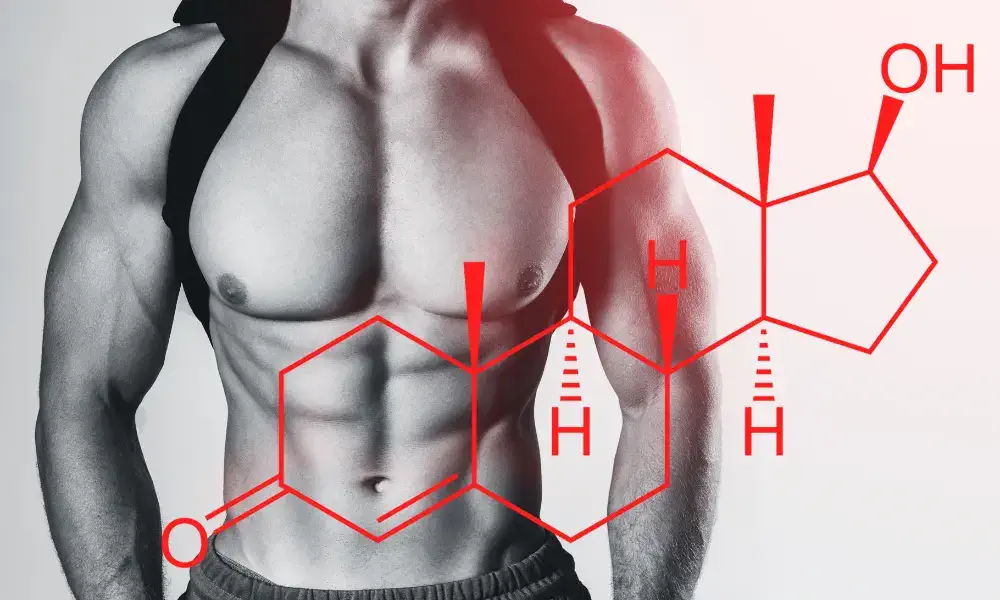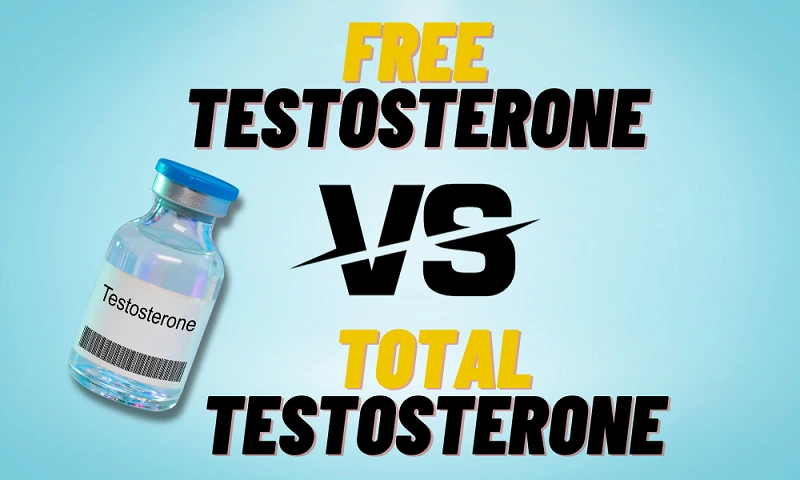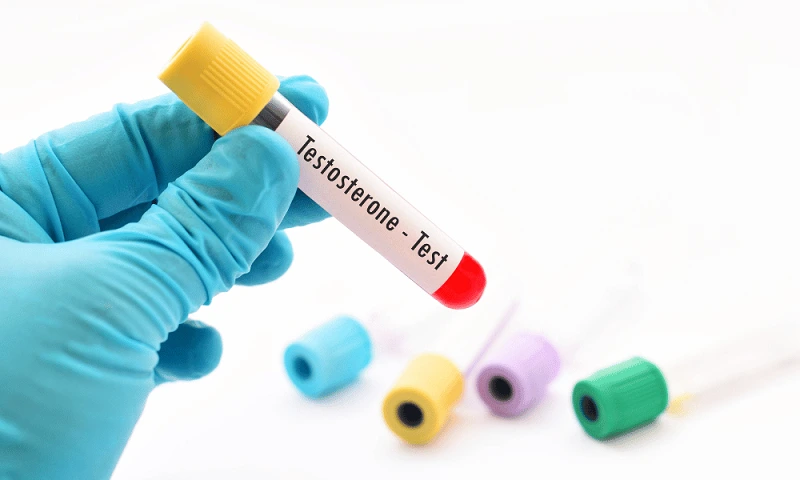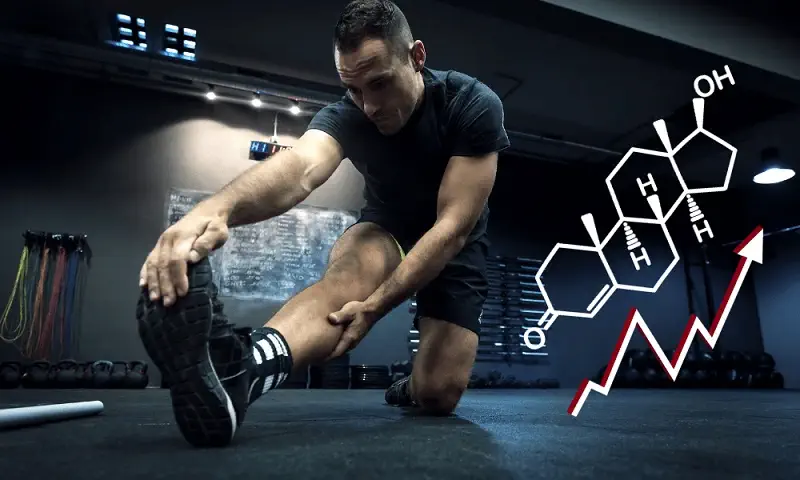
15 Jun Free Testosterone vs Total Testosterone – Which is More Important?
Even though many know what testosterone is, not everyone is aware of the further segregation of Free and total testosterone.
Produced in men’s testes, women’s ovaries, and adrenal glands, testosterone is an androgen/steroid hormone liable for the development of male reproductive tissues.
Adding to it, the indicators of manliness, such as beard growth, men’s voice, and Peniel growth are entirely affected by testosterone levels.
However, when it comes to testosterone, there are two types:
- Total Testosterone
- Free Testosterone
Yes, you read that right!
Not all testosterones are made equally.
Hence, apprehending the difference between free testosterone and total testosterone is the missing link between your body goals, efforts, and results.
On this note, let’s explore more about free testosterone levels vs total and find out which one is more consequential for you.
Free Testosterone VS Total Testosterone

After the body produces testosterone, it is released into the bloodstream.
But a majority portion of the steroid hormone is then bonded by numerous proteins like Sex Hormone Binding Globulin (SHBG) and Albumin.
This exact occurrence gives birth to free testosterone and total testosterone.
Here are some points that clearly distinguish between free T vs total T.
#1. Basic Difference
The unbounded testosterone in the bloodstream is free. Whereas, total testosterone is the combination of bounded + unbounded testosterone.
This is the basic difference to understanding total vs free testosterone.
To simply explain, total T is the absolute amount of testosterone present in your body. This includes both unbounded as well as those Ts that are bounded by SHBG and albumin.
On the contrary, free T levels represent only that amount of sex hormone, which is not bounded by the proteins (SHBG and albumin).
#2. Difference in Availability
Out of total testosterone levels, only 2% are free and the rest 98% are bound. Further, out of the bounded testosterone, 40% is attached to SHBG, and the rest 60% to albumin.
Also, there’s a significant difference in the availability of free and total testosterone levels in men and women. The table below will help you get a brief idea.
Total Testosterone Level:
Women
20-49 years: 0.29 – 1.67 (nmol/L)
50 years and above: 0.1 – 1.42 (nmol/L)
Men – 8.7 – 29 (nmol/L)
Free Testosterone Level:
Women – 0.0002 – 0.02 (nmol/L)
Men – 0.2 – 0.62 (nmol/L)
Free Androgen Levels (%):
Women – 0.10 – 7.07
Men – Rarely considered
SHBG Binding:
Women – 27 – 146 (nmol/L)
Men – 18.3–54.1 (nmol/L)
Albumin Binding (g/L):
Women – 35 – 50
Men – 35 – 50
Note: Free Androgen Levels are the ratio of total testosterone to SHBG.
Clearly, the testosterone levels in women are nearly 10 times lower than that of men. Out of which most of them are bound to SHBG.
#3. Free and Total Testosterone Levels Affect Health Differently
By far you already know the basic difference when it comes to free testosterone versus total testosterone.
But does it impact your health in any way?
Absolutely yes!
Free testosterone is actually responsible for all the testosterone-related changes in the body. To explain, whatever changes a male person experiences during puberty and the effects of testosterone on weight lifting and muscle building are all the results of free testosterone levels.
This happens because free Ts are unbounded and can hence, move in the body unchallenged. As a result, it is readily available to the body for usage.
Total testosterone level, on the other hand, is the deciding factor for recommending hormone replacement surgery.
Knowing total testosterone levels can help understand whether your testosterone levels are too high or low.
Additionally, it also helps pinpoint certain health issues like hypogonadism and infertility.
To sum up, if you know where your free and total testosterone levels stand, helps craft a precise diet and workout regime if you’re into bodybuilding.
These were the basic differences that clearly distinguish between free testosterone vs total testosterone. Moving further, there is another type of sex hormone that you might have heard of i.e. bioavailable testosterone.
So,
What is Bioavailable Testosterone?
Bioavailable testosterone is not another type of testosterone but simply those Ts that are available to the body for usage.
Free testosterones are bioavailable, but until recently, it turns out some portion of albumin-bound testosterone are available in the capillary bed and are deemed as bioavailable.
Adding to it, testosterones bound to albumin switch between active and inactive forms and are hence easily reversible. Therefore, those Ts that are attached to albumin protein also fall under this category along with free Ts.
SHBG-bound testosterone on the other hand is not reversible; thus, more SHBG can cause low Ts and a decrease in its bioavailability.
The basis of the distinction is, which type of testosterone do you think is crucial?
Which is More Important: Free Testosterone or Total Testosterone?

Honestly speaking, a normal level of both testosterone is equally important for the healthy working of the body.
Low total testosterone levels show the same symptoms as of decline in free Ts. Therefore it’s crucial to keep track of and balance the levels of both total and free testosterone.
However, despite that, people always focus on free testosterone levels.
Why Free Testosterone is More Important?
When talking about testosterone levels, free Ts are often in the limelight. There are varied reasons to support that.
Notably, free Ts are responsible for muscle gains. Therefore, it’s more taken into consideration by weight lifters and bodybuilders. Also, its ability to impact manliness makes it an important testosterone type.
Nonetheless, there are other reasons as well that make free testosterone slightly more important.
#1. Testosterone and Heart Health
As per the research, men with heart failure along with poor free testosterone levels have poorer prognoses.
The prognostic value of androgen hormone levels in chronic heart failure with reduced left ventricular ejection fraction showed a 27.4% prevalence of free testosterone deficiency.
#2. Testosterone and Body Composition
Another report of the study suggests that an increase in fat mass in aging males is positively correlated to lower levels of free testosterone and growth hormones.
The study further suggests an increase in lean body mass and mid-arm circumference and a decrease in waist-to-hip ratio observed after testosterone treatment of elderly men with decreased testosterone levels.
#3. Testosterone and Mobility
Research reports of a study concluded that lower levels of baseline free testosterone are associated with an increased risk of incident. There were 57% higher odds of reporting incident mobility limitation and 68% higher odds of worsening mobility limitation.
In further prospective analysis, a 1 SD increase in bassline-free testosterone levels was associated with a lower risk of developing mobility limitation.
Maintaining your free testosterone levels can help with your cardiovascular health along with mobility and body composition.
It is, therefore, clear why free testosterone levels are given more importance than serum T levels.
While the difference is quite clear about free T vs low T, how can one actually be aware of their sex hormone levels?
Testing for Low T Levels
If you’re witnessing the symptoms of low Ts like muscle loss, swollen breasts, hair loss, and low sex drive, it’s recommended to get your T levels tested.
The testosterone testing procedure measures your total T which includes free T as well.
Although there are at-home hormone testing kits are widely available, it’s recommended to consult your doctor for genuine and reliable results.
Is It Possible to Have Low Free Testosterone but Normal Total Testosterone Levels?
Absolutely yes!
There is a possibility that your total testosterone levels are normal but your free testosterone levels are low. As a result, you may experience the symptoms of low t.
The bioavailability of this sex hormone is primarily responsible for its functioning. Hence, lower free testosterone but increased total testosterone can affect your health.
So, make sure to keep your free testosterone at a normal level.
How to Increase Free Testosterone Level?

The amount of free testosterone levels is affected by both total testosterone levels as well as SHBG.
Therefore, you need to work on both factors to maintain healthy free T levels.
#1: Include such exercises that are proven to increase total testosterone levels. For instance, resistance training, HIIT, and push-ups are known to have a positive impact on the primary male sex hormone.
#2: Make sure to add foods and herbs that increase your testosterone. For instance, you can add fenugreek, ashwagandha, garlic, ginger, pomegranate, and even eggs for increased testosterone.
#3: Also, cut down on estrogen-boosting foods like soy because it can increase the SHBG and lower the bioavailability of free testosterone.
#4: Lastly, making lifestyle changes like taking low stress, improving sleep, and avoiding smoking and alcoholic drinks can also help.
The difference between total testosterone vs free testosterone levels may seem irrelevant at first.
Nonetheless, uncovering even the basic difference is no less than stumbling upon the key of a treasure, especially if you’re into bodybuilding.
Concluding Thoughts
Testosterone matters for both men and women! It is produced in both men’s testes and women’s ovaries, and adrenal glands. However, if it’s considered a primary male sex hormone, there has to be a reason behind it.
Testosterone drives manliness and a decline in it can not only impact physically but also affects men mentally.
And though there are ways to spike your T levels, one must first understand the difference between free testosterone and total testosterone.
Where total T is the combination of free and bounded male sex hormones, free T is unbounded and available for usage.
However, to know which of your Ts are low, it’s better to confer with your doctor and work accordingly.



No Comments